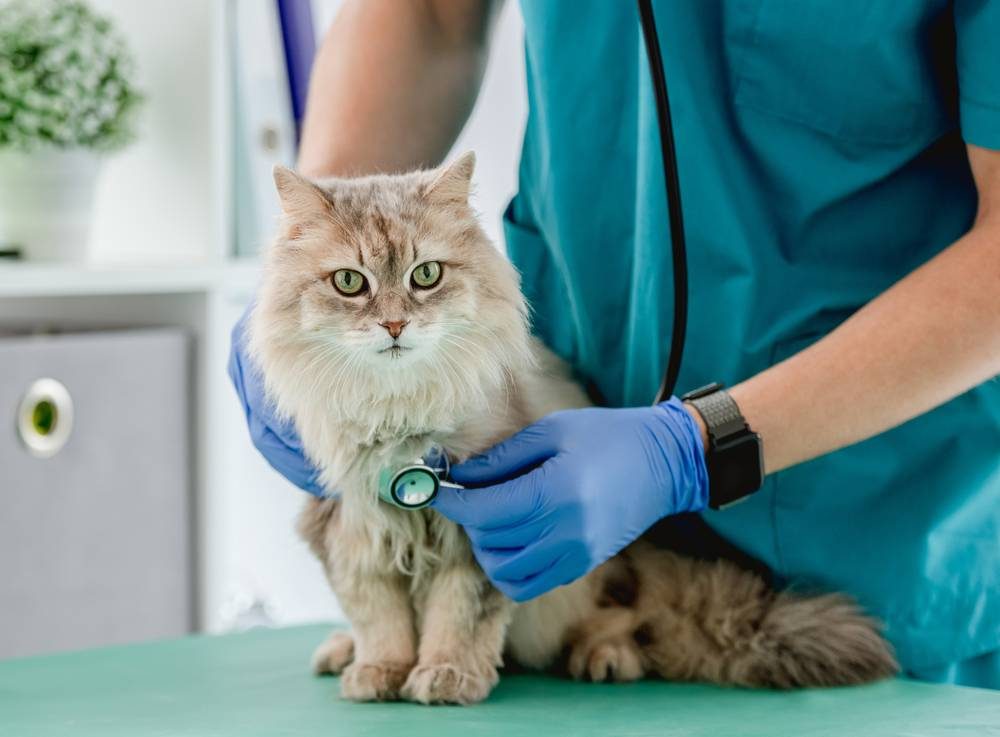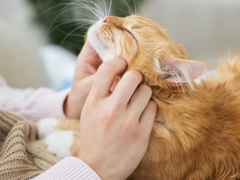
Prostock-studio / Shutterstock.com
Throughout your cat’s life, they may need surgery, hospitalization, specialized procedures, or costly medications. And that’s on top of their regular checkups. Veterinary medicine has made incredible advancements in recent decades. Thankfully, this means you can get better treatment than ever for your cat—but that premium veterinary care comes at a cost.
Accidents and major illnesses can happen to your cat out of the blue, giving you no time to prepare. Some pet owners get pet insurance or create savings accounts for their cats in case of health emergencies. But if you don’t have enough money set aside, a large veterinary bill can be overwhelming.
Even non-urgent and preventive care expenses are costly and can be difficult for some pet owners to afford. The cost of spaying or neutering, vaccines, parasite preventives, and annual exams might deter some pet owners from seeking the care their cat needs. But skipping out on annual exams can end up being more costly in the long run because medical issues might go unnoticed until your cat becomes extremely ill.
Dr. Gary Weitzman, DVM, MPH, CAWA, president and CEO of the San Diego Humane Society said an estimated 50 million pets in the United States cannot access even the most basic veterinary care.
“At San Diego Humane Society, we launched our Community Veterinary Program in August 2022 because we saw an increased need to support pet owners locally,” he said. The program provides access to low-cost or free care—from wellness and preventative care to treating sick and injured pets.
The good news is, you have some options when it comes to paying for your pet’s care. So what should you do if you can’t afford emergency care or preventive veterinary care?

Bondar Illia / Shutterstock.com
In most cases, veterinary care is expected to be paid at the time services are rendered. Always ask your vet for an estimate of how much everything will cost before consenting to treatment so you know how much you will have to pay. If you can’t afford to pay for your cat’s treatment, explore some of these options and resources:
1. Ask About Payment Plans
Although Dr. Gary said very few veterinary practices offer payment plans anymore, it’s worth checking with your current hospital to see if they have options for splitting payments up into smaller chunks you can pay over time.
2. Consider Wellness Plans
Many veterinary clinics offer wellness plans, which are bundled packages that include common preventive care services at a discounted rate. Depending on your clinic’s program, you might pay a monthly fee that includes everything your kitten or cat needs in one year, such as comprehensive exams, vaccines, bloodwork, urinalysis, spay or neuter, and dentistry services.
This can help you budget for your cat’s annual wellness expenses by paying a smaller fee every month. Many pet insurance companies also offer wellness plans, either alone or as an add-on to accident and illness policies.
3. Shop Around
Veterinary fees can vary quite a bit depending on where you live. It might be worth your time to shop around for veterinary hospitals in different counties or cities to see if you can find a place that offers quality care at more affordable prices.
4. Look For Low-Cost Clinics and Services

Tatyana Vyc / Shutterstock.com
Animal shelters, veterinary colleges, community social services, and other organizations in your area may offer low-cost services such as vaccine clinics, spay-and-neuter events, and affordable veterinary care.
“Nonprofits like San Diego Humane Society might have community veterinary programs or even mobile pop-up clinics that serve under-resourced neighborhoods,” Dr. Gary said. “Other nonprofits might provide financial support for pet owners who can’t afford to provide care for their animals.”
5. Ask About Third-Party Billing Services
Some veterinarians offer payment or prepayment plans via a third-party service like VetBilling, which allows you to pay large bills off over time for a one-time enrollment fee and nominal payment plan fee.
6. Explore Your Credit Options
Ask your vet about using CareCredit or ScratchPay, which are temporary credit cards that allow you to pay your vet bill off monthly over a set period of time (6–24 months for CareCredit and 2–72 months for ScratchPay). In the case of CareCredit, no interest is charged on purchases of $200 or more as long as you make the minimum monthly payments on time and pay off the full amount by the end of the promotional period.
7. Online Fundraising
Some pet owners raise funds to pay for large veterinary bills or surgeries via online crowdfunding platforms like GoFundMe or the pet-specific Waggle. Such fundraisers for medical expenses can easily be shared with family, friends, and even the public via social media.
8. Talk to Your Breeder or Shelter
If you bought your purebred cat as a kitten from a reputable breeder, they might be able to help, especially if your cat develops a congenital condition that’s covered by your breeder’s health guarantee. They might also be able to offer other support through their network of cat lovers, whether of your breed or other breeds. Likewise, the shelter you adopted your pet from may have local suggestions for you.
9. Sign Up for Pet Insurance
Pet insurance is an excellent way to budget for veterinary care. Pet insurance won’t help if your pet is already sick or injured because of waiting periods and preexisting condition exemptions. However, pet insurance is very affordable for kittens or young adult cats. Pet insurance allows you to budget to pay smaller monthly premiums and then receive reimbursements for your veterinary bills.
“I strongly recommend pet insurance,” Dr. Gary said. “Plans cover illnesses, injuries, and prescriptions, as well as routine and preventive care depending on the plan. Read your premium information carefully and even call the insurer to make sure you understand what is covered and what isn’t. Pet insurance provides peace of mind. Someday if you really need it, it might just save your pet’s life, along with your wallet.”
10. Apply for Financial Assistance From Pet-Specific Programs
The following organizations offer financial assistance and urgent care grants for pet owners who are unable to pay their pets’ veterinary bills. Visit the websites for specific information about each program.
- Banfield Foundation
- Best Friends Financial Aid for Pets (state-by-state listing)
- Frankie’s Friends
- Handicapped Pet Foundation
- Help-a-Pet
- Joshua Louis Animal Cancer Foundation
- Magic Bullet Fund (funding for cancer treatment)
- Pets of the Homeless
- RedRover Relief
Frequently Asked Questions
Why are vets so expensive?
Veterinary medical care has become nearly as advanced as human medical care. This means your cat can benefit from modern diagnostic tools and treatments. However, advanced medicine is costly. Veterinary hospitals are also businesses that must pay for expenses such as wages, rent, utilities, and other supplies.
What if my cat has a medical emergency?
Take them to your closest emergency veterinary hospital for care. Even if you think you cannot afford it, bringing your cat in for care is the most humane thing to do. A cat with a medical emergency may be in extreme pain or face other complications such as infection.
The emergency hospital can advise you of your options, which might include payment plans, community services, financial assistance, third-party billing options, or no-interest lines of credit specifically for veterinary care.
What if I can't afford my cat’s checkup?
Consider booking an appointment regardless. Your veterinarian might be able to offer assistance or direct you to resources to help you pay for your cat's medical care. Part of being a compassionate pet parent is finding a way to provide the care your pet needs by reaching out for help. Many community resources are often available to assist low-income families and pet owners with financial difficulties.
 Fact checked by
Fact checked by








Where is the button to reject all cookies??
Hi Dale, unfortunately, we are unable to offer this feature to our readers at this time.
Veterinary care is outrageous! It definitely has NOT advanced that much, please stop making excuses for money gouging. Thanks to corporate take over and corporate greed, the majority of the population can no longer afford basic health care for their animals because the main drive is making long term patients and money – not actually healing the animals. It’s a very SICK system!